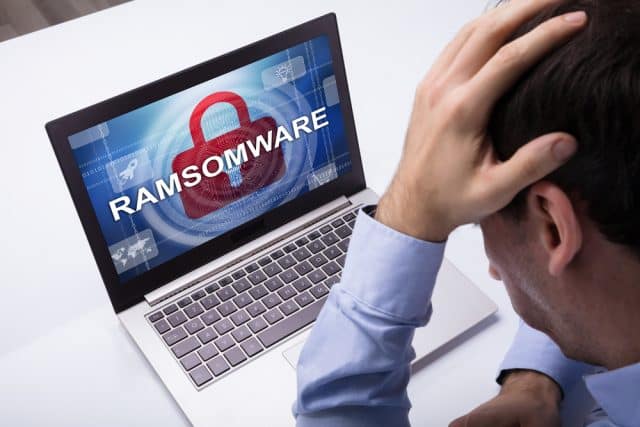The rise of ransomware: How to protect a modern company

In 2021, the cost of ransomware attacks is expected to exceed more than $20 billion worldwide. Ransomware has emerged as one of the most lucrative, elusive, and easy-to-implement methods of cyber-attack currently available. Being able to hold a company, its operations, and its data completely hostage presents a great opportunity for malicious hackers looking to maximize their earnings. This is made more attractive by the fact that many businesses lack the preparation necessary to sufficiently protect themselves from ransomware attacks. In a world where companies have become increasingly reliant on technology to store, manage, and facilitate their data and processes, business security solutions have never been more important.
The goal of this article is to analyze the rise of ransomware attacks and identify the ways in which an organization should protect itself against this increasingly popular form of cybercriminal activity.
Why Are Ransomware Attacks on the Rise?
As mentioned earlier, the three main reasons for ransomware’s rise in popularity are that it is very profitable, difficult to prosecute, and relatively easy to execute. Ransomware has become so popular that 7 percent of the ransomware threads found in online criminal communities showcased ransomware as a 'service.' Rather than developing their own sophisticated malware to lock out and encrypt their victims’ files, threat actors are now renting the viruses of other established cybercriminals. This is one of the most concerning developments for the cybersecurity community. Virus protection and ransomware removal become that much more difficult if said attacks are being launched at a much higher volume. With the development of ransomware-as-a-service, amateur hackers could look to take advantage of one of the most cost-effective hacking techniques on the market and execute that much more attacks.
The Importance of Ransomware Removal and Virus Protection
One of the most burdensome situations for any organization to overcome is the fallout of a successful ransomware attack. In addition to suspending administrator access to files, documents, and networks, ransomware attacks can also be used as an integral instrument in a data breach. While shutting down one’s operations is costly, its consequences, both financially and reputationally, are fixed and measurable. In the event of a data breach, a company could be at risk of losing its customer base, its employees as well as its intellectual property. All of the confidential information that is extracted and released, whether it be personal or corporate, can have extended ramifications beyond just a fixed period of time. In 2018, it was reported by the U.S. Department of Justice that Iranian hackers had compromised over 140 American universities, stealing 31 terabytes of data that were estimated to be worth roughly $3 billion.
With the cost of recovery so high for some of these ransomware attacks, it can be very tempting for enterprises to succumb to paying the cryptocurrency ransom. Paying off the ransom, however, is not that simple. Besides the risk that the criminals may not decrypt the affected files and documents, the U.S. government may actually fine those who pay this ransom. This is because certain hacker groups are affiliated with terrorist organizations. And, in the United States, it is illegal to cooperate or support said terrorist activity.
Considering all of the consequences, complexities, and costs that ransomware attacks inflict, companies should prioritize the allocation of resources towards preventing, detecting, and responding to ransomware software as quickly and effectively as possible.
How to Protect Your Business from Ransomware Attacks
While ransomware is very easy to launch successfully compared to other methods of hacking, it is largely due to the lack of preparation and sufficient business security solutions. Fortunately, there are many ways to improve your cybersecurity and optimize your protection against ransomware attacks. Below are a few of the ways in which an organization can reliably upgrade its ransomware security.
Establish a Data Backup and Recovery Plan
Backups are one of the most effective business security solutions for successful ransomware removal. Instead of trying to brute-force decrypt assets -- or even remove the virus -- it is much easier to wipe all current systems and upload a previous version prior to the malware deployment. For data backups to be a reliably effective part of your incident response play, systems, IoTs, and networks should be frequently backed up. The more recent your backups are, the less time and resources will be spent trying to recover those that have been lost. The caveat with data backups and malware is that previous file saves may contain a dormant virus that your IT team is unaware of. In this case, uploading a backup would keep malware on the system. This is why digital forensics is so imperative to the disaster recovery process.
Regularly Update Company Devices with Most Recent Software Versions
While it is one of the easiest cybersecurity steps to apply, it is also one of the most overlooked. Many cybercriminals will try to take advantage of software, website, web application, and other zero-days as a way of gaining the necessary credentials to successfully deploy their ransomware campaign. The tech companies that support and develop these programs and services are constantly looking for ways to update these exploits and secure their commodities. The way in which these companies do so is through zero-day patches or updates. By frequently updating all company devices to the latest OS version, you eliminate the possibility of older exploits being used. In the case of WordPress, many companies had failed to update their websites following their discovery of their four zero-days earlier this year. Not updating this patch meant that cybercriminals could remotely take control of the website and execute arbitrary code, granting them access to sensitive data.
Seek Outside Consultation
Not all businesses have the resources, expertise, or infrastructure to develop a 360-degree cybersecurity plan to mitigate all types of ransomware threats. By outsourcing some of your security responsibilities, you can create an individualized business security solution that maximizes protection and minimizes risks. It is one of the more cost-effective ways to build comprehensive cybersecurity infrastructure and methodology.
Image credit: AndreyPopov/depositphotos.com

Anas Chbib is one of the most respected leaders in the security industry, known for his unmatched business ethics, inspirational entrepreneurial spirit, and fierce desire to offer organizations worldwide highly-secured environments in order to ensure business continuity and better service. Anas is currently the Founder and CEO of AGT, a highly respected, international cybersecurity firm.
